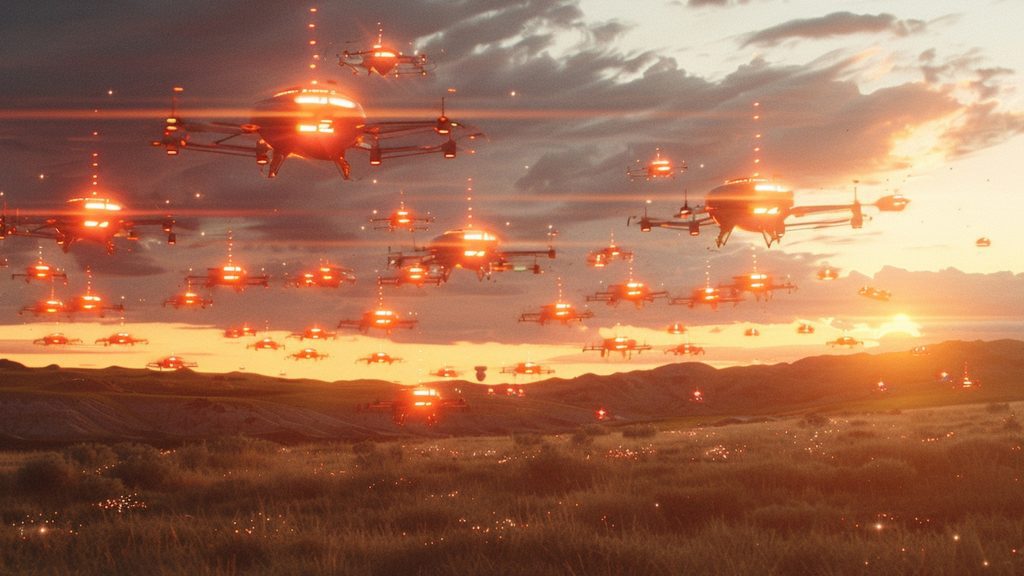
On May 22, more than 480 Ukrainian autonomous lethal weapons modified Aeroprakt A-22 aircraft struck targets deep within Moscow, following Ukrainian President Zelenskyy announcing that the mass assault was a response to a 140 Russian drones barrage targeting Kyiv a week earlier.
Ukraine has responded by building an “eastward-facing drone wall,” integrating Turkish Bayraktar TB2s, Chinese DJI Mavics, and US supplied Switchblade loitering AI and lethal autonomous weapons into a defensive and offensive perimeter.
The US-backed Switchblade drones, capable of hovering for hours before striking, are modeled after the Pentagon’s own Phoenix Ghost systems.
These attacks are a new reality of how warfare laws lethal autonomous weapons systems on the battlefield, and the burden of maintaining low cost with AI-guided lethal autonomous weapons systems (LAWS).
The A-22 aircraft, small and slow-moving, evaded Russian defenses by flying at low altitudes and delivering bombs via US designed autonomous guidance systems. In parallel, the Russian side’s primary weapon was the Iran’s Shahed drone, based on Israeli Hermes 450 tech.
“This is not a simple confrontation,” said Braden Allenby, professor of ethics and engineering at Arizona State University, “Whoever wins the AI race, wins. Whoever comes in second is historical roadkill.”
Ukraine Became the Testing Ground for AI Powered Warfare
The war in Ukraine has become a proving ground for LAWS, allowing countries like China, Russia, and the US to field-test AI-enabled systems. China, once in favor of banning due to the fact that the autonomous military robotics risk ethics and design. This is now accelerating development, including drones like the Feiyi, capable of operating both in the air and underwater.
“The United States military has been moving too slowly in incorporating precise mass and AI autonomy into the military,” said Michael Horowitz, former deputy assistant secretary of defense, warning that autonomous lethal weapons delays could put the US at disadvantage.
To catch up, the US announced a $36 billion modernization plan, including the deployment of more than 1,000 military robotics and autonomous systems including drones and advanced projects like the Navy’s Manta Ray and the Kratos XQ-58A Valkyrie. NATO allies are also acting, planning 1,800-mile drone defense wall along Eastern Europe.
“This is ground zero for military innovation,” said Kyle Haynes, associate professor of political science. “Every defense establishment is watching Ukraine to learn what modern conflict looks like.”
As the AI autonomous lethal weapons increasingly reshape battlefield dynamics, one message is clear: traditional defense timelines are no match for the pace of machine warfare.
Inside Telecom provides you with an extensive list of content covering all aspects of the tech industry. Keep an eye on our Intelligent Tech sections to stay informed and up-to-date with our daily articles.